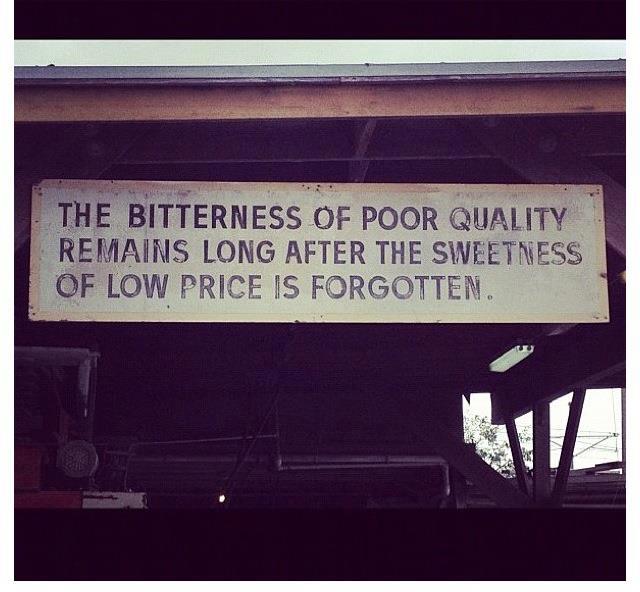
Image via Elephant Journal
Saving money is nice. We all wish we could get our costs down and give our budget a little more wiggle room. But what are you willing to sacrifice in order to get there?
Although low bids can be tempting, they can be costly in the long run. In fact, hiring the vendor with the lowest bid can mean ongoing problems after the project is complete, leading to significantly higher lifecycle costs.
Here are some ways you can avoid the hidden risks of the lowest bidder.
1. Check out past performance.
During the selection process it’s important to pay special attention to the vendor’s past performance. Many times, the lowest bidder lacks experience, or has had poor performance reviews in the past. Make sure you look into everything from records of integrity, quality, and safety to on-time delivery and team resumes.
2. Ensure trustworthiness.
It’s essential that the vendors in question build relationships with their partners based on trust. Be wary of those who simply say that they’re trustworthy; they should actively be conducting themselves in a trustworthy manner day in and day out.
In order to measure how trustworthy the vendor is, look at their internal structure. Are operations bogged down with bureaucratic rules, regulations, procedures, and policies that are inefficient? If so, it’s probably a low-trust organization. On the other hand, if ideas, creativity, and knowledge sharing are encouraged and social friction is reduced, you’ve probably found a high-trust vendor.
3. Look at the employees.
Another great way to see if you should do business with a company is to look at their employees. After all, the employees are what make up the organization as a whole.
If the vendor’s employees display competence and character, the company will follow suit. If the employees are incompetent and unmotivated, however, steer clear—if they don’t care about their employer, why would they care about your organization?
4. Keep an eye out for rookie mistakes.
If the vendor is new to the field and/or inexperienced, you may be able to tell within their proposal.
For example, when it comes to outsourced custodial services, experienced vendors will base their rates on environment, floor surface, scope of work and frequency of custodial needs, whereas inexperienced vendors will base their price on square footage alone.
5. When in doubt, throw it out.
A good rule of thumb is to throw out any quotes that are more than five to 10 percent below the average of the next two lowest quotes. This way, you’ll be able to get rid of lowball quotes or quotes made in error, thereby reducing the chance your organization will end up with a vendor that can’t perform the specified task for the bid amount.
Conclusion
It requires careful planning on the part of facility management executives to balance the imperative to control initial costs with the desire to make the best long-term investment.

Image via FunPic
Although low bids are tempting, the pitfalls can be numerous. For this reason, it’s important that your organization prepares thorough bid specifications and conducts extensive research on potential vendors.



